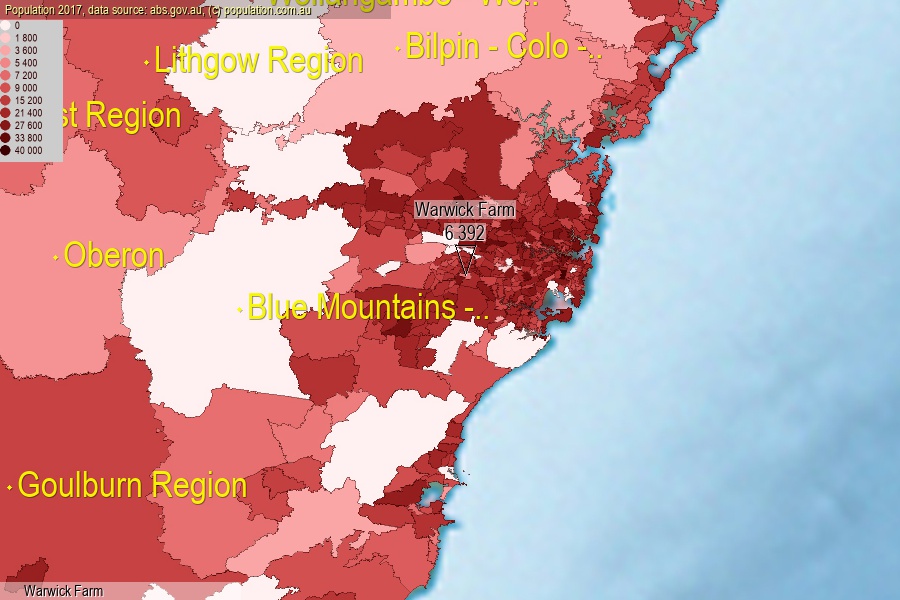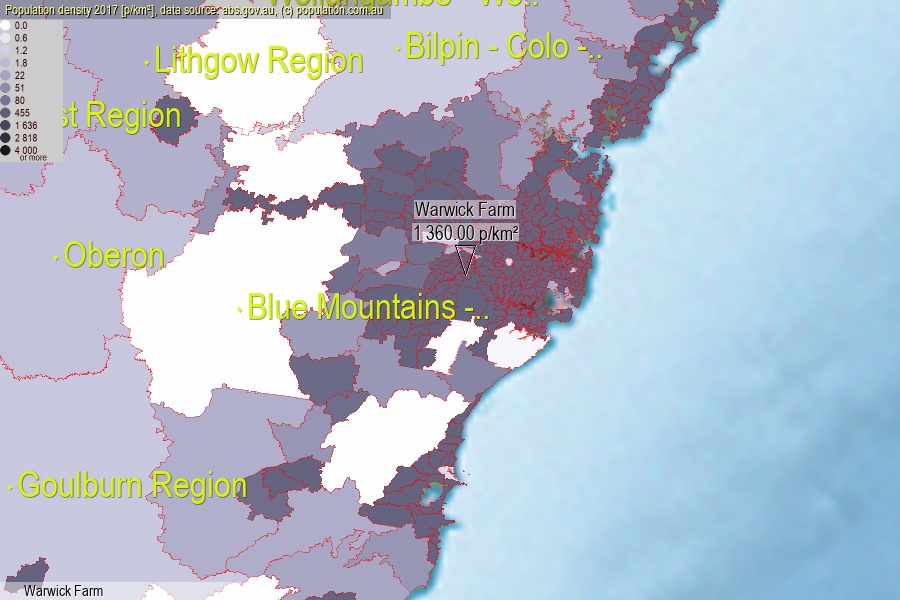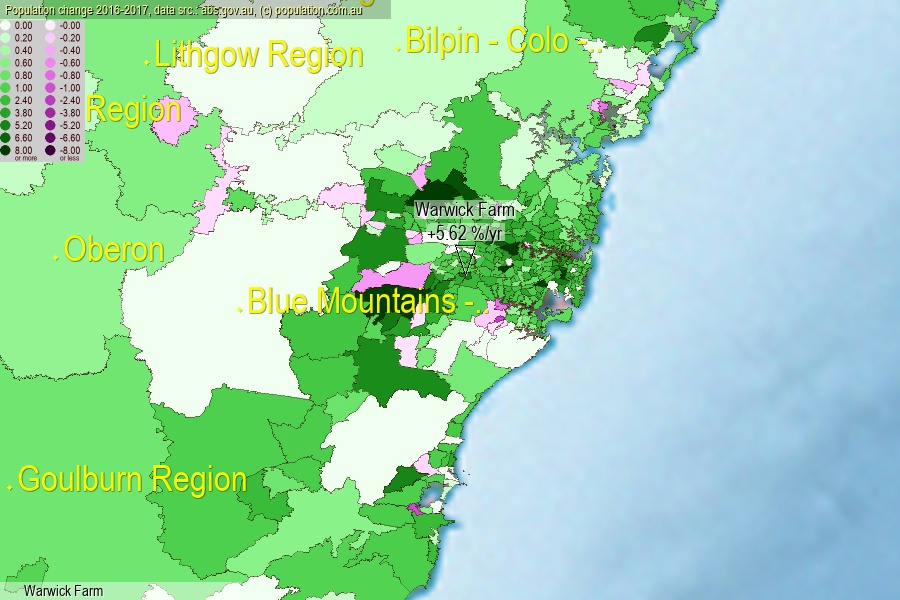 population.com.au
population.com.auLast official estimated population of Warwick Farm (as Statistical Area Level 2) was 6 392 people (on 2017-06-30)[2]. This was 0.03% of total Australian population and 0.08% of NSW population. Area of Warwick Farm is 4.70 km², in this year population density was 1 360.00 p/km² . If population growth rate would be same as in period 2016-2017 (+5.62%/yr), Warwick Farm population in 2025 would be 9 898. [0]



Click to enlarge. Warwick Farm is located in the center of the images.
Population [people], population density [p./km²] and population change [%/year] [2]
View borders » (new window) [4]
[2001-2002] -1.38 %/Yr.
[2002-2003] -1.70 %/Yr.
[2003-2004] -1.76 %/Yr.
[2004-2005] -0.19 %/Yr.
[2005-2006] -0.46 %/Yr.
[2006-2007] +1.14 %/Yr.
[2007-2008] +3.32 %/Yr.
[2008-2009] +5.23 %/Yr.
[2009-2010] +2.85 %/Yr.
[2010-2011] +3.48 %/Yr.
[2011-2012] +5.17 %/Yr.
[2012-2013] +4.76 %/Yr.
[2013-2014] +4.32 %/Yr.
[2014-2015] +5.33 %/Yr.
[2015-2016] +3.83 %/Yr.
[2016-2017] +5.62 %/Yr.
[0] Calculated with linear interpolation from officially estimated population
[1] Read more about SA2 and Australian Statistical Geography Standard (ASGS) on abs.gov.au
[2] Population data from Australian Bureau of Statistics (Population and density: 2017; change: 2016-2017)
[3] Digital Boundaries: Australian Statistical Geography Standard (ASGS) 2016.
[4] Border coordinates are simplifyed using Ramer-Douglas-Peucker algorithm.